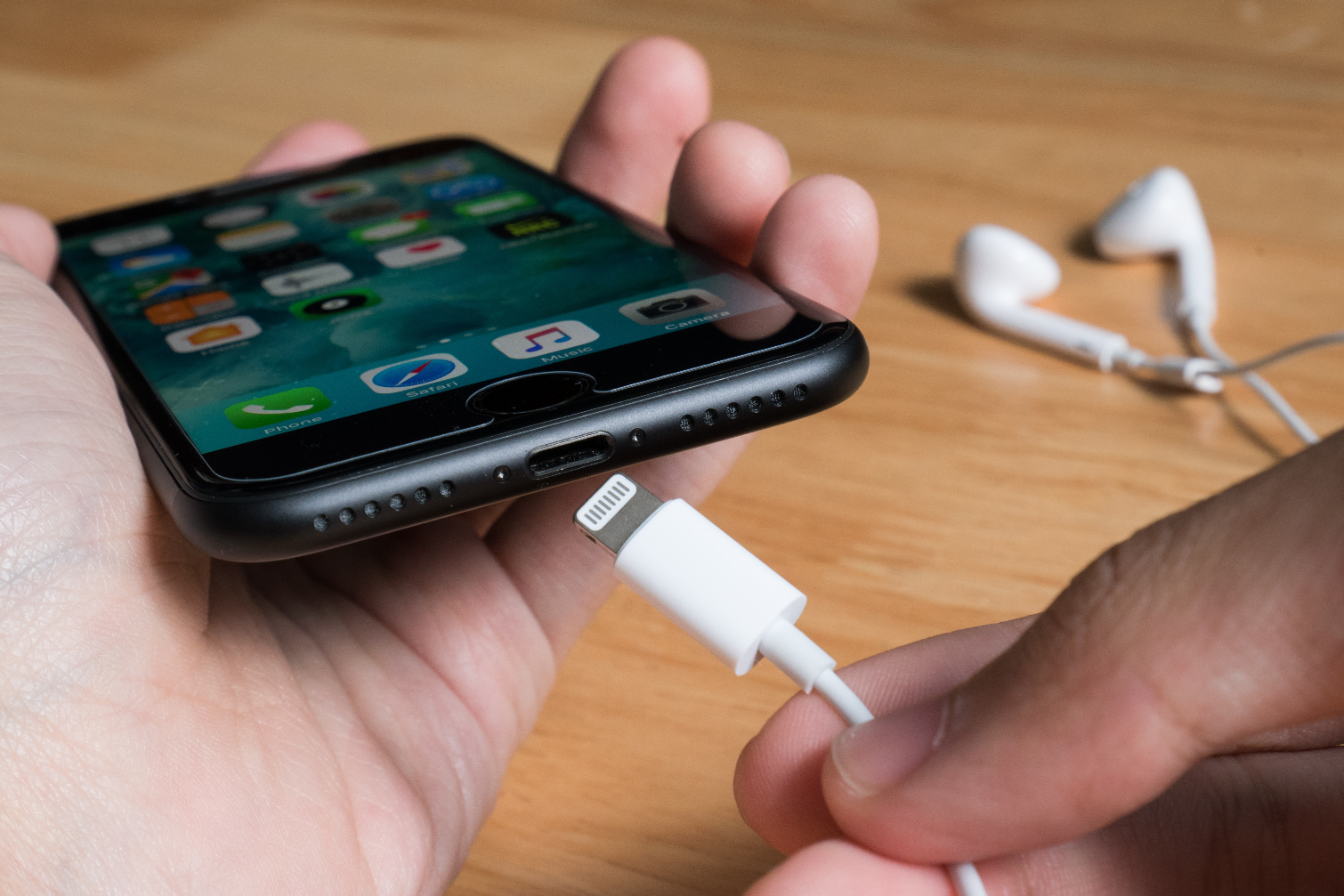Rejoice! Apple May Be Dropping Its Lightning Port
The iPad Pro may drop the Lightning port in favor of USB-C, which may herald a future migration across all devices — one that the European Union is getting ready to enforce.
A last-minute research note by reputed Apple analyst and fortune teller Ming-Chi Kuo provides two key details about the new iPad Pro: it will allegedly feature Face ID and drop its proprietary Lightning port in favor of plain USB-C, the connectivity used in the latest MacBook and iMacs.
If true, this can signal a future without the fastidious Lightning — which is great news for consumers everywhere.

The first bit was expected. With the rumored greatly reduced bezels, Apple will not have space to include a home button in the new iPad Pro, just like it happened with the iPhone X and all the new iPhones — the biggest user experience change in a decade. And without a home button, you will need Face ID.
Kuo just confirmed that, according to him, people will use their faces to unlock their 2018 iPad Pros — and play with Animojis for the first five minutes after unwrapping their shiny new tablet.
MORE: New iPhones: iPhone XS, iPhone XS Plus and iPhone 9 Rumors
The real bomb here, however, is the alleged elimination of Apple’s Lightning port in favor of USB-C. If true, this may herald a future without proprietary connections that is both inconvenient and expensive for all of us.
There is no reason for a proprietary port in your iPhone or iPad — except enormous profits.
Sign up to get the BEST of Tom's Guide direct to your inbox.
Get instant access to breaking news, the hottest reviews, great deals and helpful tips.
The Lightning port was allegedly designed to provide with a convenient way to carry all the data and power that Apple needed, although other smartphones have used mini or micro-USB with the same purpose. Apple said that it couldn’t do the things they wanted in the space they needed to use, so it invented Lightning.
In reality, Apple used Lightning to further lock users into their ecosystem. The company charged a hefty premium for cables and accessories that were less than durable.
Apple has also charged third-party accessory manufacturers a “Made for iPhone” tax: any company wanting to sell cables for Apple devices has to go through a certification process. If they pass (looking at the market for Lightning cables, everyone seems to pass) they have to pay for and include a custom Apple microchip that tells your iPhone or iPad which cables are ok to use and reject the others.
MORE: The One iPhone Trick Everyone Needs to Know
Apple claims that the MFi program was made to guarantee the maximum quality of the components, despite the fact that its own cables and adapters have been criticized for failing.
As a result, lots of consumers have had to buy new cables at a high price when the cable included in the box stopped working. Add to this the inconvenience of having to deal with a world where many users don’t have Apple phones and couldn’t lend you a cable for a quick emergency charge.
But now, with USB-C, there are no excuses left. Any USB-C cable works just fine and this iPad Pro move proves it.
The move comes at the right time, too. This summer, the European Union started the process to force all manufacturers to standardize their devices’ ports using USB-C. The iPad Pro may be the first Apple device to comply with this rule, a law that is not coming soon enough.
Jesus Diaz founded the new Sploid for Gawker Media after seven years working at Gizmodo, where he helmed the lost-in-a-bar iPhone 4 story and wrote old angry man rants, among other things. He's a creative director, screenwriter, and producer at The Magic Sauce, and currently writes for Fast Company and Tom's Guide.
-
oufan08 Rubbish article. They aren't ditching lighting, I actually prefer lighting over usb-c, there are actually issues with USB-C. All my usb-c ports on my laptop are loose and cords fall out. You can easily buy cheap and durable lighting cables as well.Reply -
davidb23a Apple is not going to stop abusing its customers for profit now. Apple's proprietary overpriced ports and cables is what makes them the most money. Best Buy recently admitted their most profitable product is apple dongles and proprietary cables.Reply
I cant believe apple would stop this greedy practice now by actually adopting an industry standard. -
millertime.beerdrinker Total bull. The mini USB ports on my Samsung tablet constantly have issues resulting in slow charging and bad and loose connection. My iPhone with a lightning port has ZERO problems. ZERO. I will take lightning every time, as it is simply a better design.Reply
Get a clue - Good products cost a bit more. -
millertime.beerdrinker Rejoice? More like cry! The mini USB ports I have are nothing but problems - slow charging, bad connections, etc.Reply
ZERO problems with Lightning. ZERO.
Apple, stay with what works. Lightning is simply a better, more durable design. -
eadint When the lightning adaptor came out usb mini and usb micro were jokes. They are hard to plug in and the voltages and specs from cable to cable are sad. Lightning also is swappable so that you can plug it in in the dark and not mess your iphone up. Finally Lightning supports HDMI and many other protocols and has a higher transfer rate than usb. Guess who pioneered USBc, Apple they helped develop and worked with intel to make it a standard. At that time it was called lightpeak, but the industry did not adopt it fast enough and apple had to go with lightning. Now that USBc is common Apple will most likely adopt it across all of their devices in the next cycle. If you actually look at the specs of lightning you will see that it is far superior to USB and has many other uses than charging your phone, at the time of the adoption it was superior to USB in every metric. As far as MFi this was an attempt to force quality control so people would know that the cable they bought would work. Apple doesn't throw a bunch of crap together and market a clunky product, they market user experience, consistency and reliability. I have never had a problem with lightning cables, but then I don't abuse mine, my daughter breaks them all the time but that is because she manages to twist, knot and mangle her cables in ways i didn't think possible, so if your a , then lightning is unreliable.Reply -
crispben EADINT - Apple helped pioneer USB-C along with Intel, MS, Google, Dell, Samsung, and about 700 other companies (USB Standard). I wonder if the industry would have adapted it faster if one of the major companies (Apple) would have put it in their phones/tablets instead of just creating another cable? The specs of lightning cable are actually not available from Apple, as they are proprietary, however 3rd parties have been able to divulge most of the information. Lightning cables have only been shown to handle up to 12W of power, USB-C can handle up to 100W (20V/5A charge speed), which makes charging a laptop available as opposed to even considering doing that with the lightning cable. USB-C is also superior in data transmission with 10Gbps vs 480Mbps (lightning cable).Reply
MFi was definitely not a means to attempt quality control, it was blatantly a way to force purchasing through their own ecosystem, if they were truly worried about quality they would have added cable strain relief (cable gland) at the connection point like every other cable....ever....since the 50's, but they were more worried about aesthetics than function.

